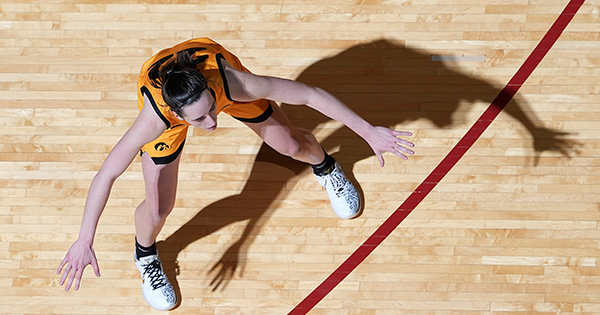Change may be gradual, but fans are “increasingly willing to pay to watch women’s sports for their own value”
There is a saying in developmental psychology: “Change is gradual rather than insightful.” Sometimes though, there are moments when a catalyst leads to change and there is an “insight”—a leap forward. For more than a century, women have sought to compete and to be compensated for their full worth in sport—just like men. Yet their compensation remains a tiny fraction of what men receive.

A possible catalyst for progress towards equity was recently drafted by the WNBA: Caitlin Clark. Clark’s massive popularity has attracted lucrative sponsorship deals for her and even an appearance on a recent episode of Saturday Night Live. An indicator of Clark’s effect on interest in women’s basketball can be gauged by TV ratings. For the first time ever, the NCAA’s March Madness championship game between Clark’s Iowa and South Carolina drew a larger audience than the men’s final game. But a few weeks later, when Clark was chosen in the WNBA draft by the Indiana Fever, the gap between the $78,000 she will earn and what a top NBA pick, Victor Wenbanyama, would garner—$10.5 million—is more than shocking.
So why do women get paid less than men in sports? The WNBA is trying to grow a revenue stream (marketing, television contracts, merchandise, etc.) to support larger salaries. But other reasons also explain why women’s salaries lag. The knee-jerk explanation (emphasis on jerk) from some might be, “that’s because women’s basketball is inferior to men’s.” But it is more complicated than that. Sports management leaders have failed to advocate for arrangements that favor women. For example, in previous collective bargaining deals WNBA players took home less than 23 percent of the league’s revenue. Compare that to NBA players, who get roughly 50 percent of the league’s revenue. However, in the latest 2020 labor deal with the WNBA, that figure rose to 50 percent. Though still unequal, it’s a move in a positive direction.
Historically, of course, in all major sports, women make less than men. In the 1970s tennis great Billie Jean King was an early crusader for fair compensation. She founded the Women’s Sports Foundation in 1974 to address this issue and others. Later, superstars like Serena Williams pushed for change, and by 2007 all Grand Slam tournaments awarded equal prize money for men and women. But the big stars in women’s tennis still make less than two thirds of what the top men make. For example, top player Iga Swiatek earns $24 million annually as opposed to Novak Djokovic’s $38 million.
Why has there not been more management advocacy for WNBA players? It is clear that pay inequity in sports also involves sexism, racism, and homophobia. In recent years player advocates like Megan Rapinoe have been leading the fight on the legal front against the U.S. Soccer Federation for equal pay between the U.S. Women’s National Team (USWNT) and the men’s team. Under the settlement terms of their 2020 lawsuit, athletes will receive $24,000,000 in back pay and the US Soccer Federation pledges to equalize pay between men’s and women’s national teams. But Rapinoe has been vilified in many media and public spaces for her advocacy, especially because she is a member of the LGBTQIA+ community.
Many of the top WNBA players are Black women, which also contributes to the inequity. The best women’s hoop players still must go abroad to earn more of what they are worth. Brittney Griner went to Russia to play. The fact that Caitlin Clark, who is white and untested at the professional level, is now one of the top-paid WNBA players, at $78,000, has gained the attention of more than a few veteran players. Besides playing for her home state at the University of Iowa and then signing in Indiana (becoming a local hero), one must wonder if Clark’s race is part of her enormous popularity in this moment.
But maybe Clark’s story captures the zeitgeist of this decade. Her ascent to stardom speaks to a larger phenomenon that the guy on the barstool overlooked: fans are increasingly willing to pay to watch women’s sports for their own value. Many commentators have praised the teamwork displayed in passing, and the selflessness seen in the women’s game. In other sports there is real change too. Kansas City is building the first-ever soccer stadium for women’s soccer. And this year’s Women’s Hockey Beanpot tournament sold out the Boston TD Garden for the first time.
So while the WNBA hopes to profit on the Catlin Clark excitement, other players will benefit as well. So yes, change is gradual. Even if the forces that slow progress exert their downward pull, Caitlin Clark’s moment gives us a glimpse of what may be ahead.
Be the first to comment